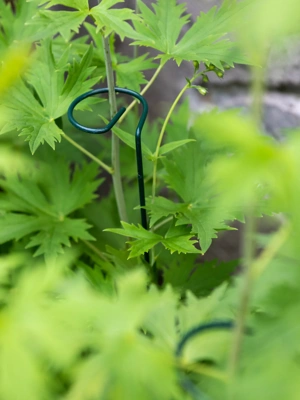How to Grow Gladiolus

These classic flower spikes have been adorning midsummer gardens and bouquets for generations. Today's gardeners can choose from a wide range of flower forms, colors and heights, so there's certainly a gladiolus for everyone's taste. Gladiolus are generally grouped by flower size into classes from miniature to giant.
Some of the most popular 3- to 4-foot tall varieties come in a wide range of colors: garnet red, hot pink, yellow, cream, coral and even green. Most gladiolus varieties are only winter hardy to USDA zone 7. One exception is a hardy gladiolus (Gladiolus nanus). This type of gladiolus features 20-inch tall plants on corms that are winter hardy to USDA zone 5.
Although many gardeners grow gladiolus for use as cut flowers, they are also attractive planted in an annual garden with zinnias, lavatera and celosia.
 Want to experiment with color? Try some boldly colored gladiolus.
Want to experiment with color? Try some boldly colored gladiolus.How to Plant and Care for Gladiolus
Gladiolus are native to South Africa and grow best on a sunny site in sandy loam soil with good water drainage. Any soil that is good for growing vegetables is good for gladiolus. Mix compost into planting beds in spring to help with water drainage and fertility. Gladiolus don't compete well with other plants or weeds, so for best results, keep the area around them open.
Gladiolus can be planted about two weeks before the last expected spring frost. It will take 70 to 90 days from planting until flowering. For a continual harvest of flower spikes, plant a few corms every two weeks until early summer. Plant corms 2 to 6 inches deep, depending on their size, and cover with 2 inches of soil. Space corms 5 inches apart in rows or groups of 10 to 15 corms. Once the plants are about 6 inches high, hill up the soil around the base of the plant to help support the stem.
Apply a water-soluble fertilizer 4 to 6 inches away from the stems when the plants are 6 to 10 inches tall. Apply a second application when the flower spikes start to show color. Keep the plants weed-free and mulched with a 2- to 4-inch-thick layer of bark mulch, wood shavings or straw. Keep plants well watered to produce the largest flowers.
Tall varieties will probably need staking to prevent the flower spikes from flopping over in the wind. Hilling the soil will help, but staking individual flower spikes or creating a grid with stakes and string are the best ways to keep flower stalks upright. Single stem supports are ideal.
 Single-Stem Supports are ideal for gladiolus.
Single-Stem Supports are ideal for gladiolus.How to Harvest Gladiolus
If you're growing gladiolus so you can cut blooms for bouquets, flower spikes should be cut on a slant when the lowest flowers on the stalk begin to show color. When cutting the flower stalk, leave at least four leaves on the plant to feed the corm for next year's blooms. Immerse the cut end of the flower spike in water immediately after cutting. Our galvanized, 4-section Flower Caddy works beautifully for harvesting gladiolus.
 Because they're good in bouquets, gladiolus make a fine addition to this cutting garden.
Because they're good in bouquets, gladiolus make a fine addition to this cutting garden.Storing Gladiolus Corms
In USDA zones 7 and 8, mulch gladiolus beds with a layer of hay or straw for winter protection. In USDA zones 5 and 6 areas, except for the hardy gladiolus varieties, dig up the corms for winter storage before the first frost. Clean off corms, cut the stalk within half an inch of the corm, and let them cure for one to two weeks in a warm, airy location. Once dried, remove and discard the old corm as well as any small cormels. Store the large, new corms in plastic mesh bags in a well-ventilated room where temperatures remain from 35 to 50 degrees F. Plant gladiolus corms again in spring for another year of beautiful blooms.
 The Stack!t Herb Drying Rack would work well for curing and storing corms.
The Stack!t Herb Drying Rack would work well for curing and storing corms.Last updated: 06/28/2023
Print this Article:
Related items
Get the Dirt
Stay up to date on new articles and advice. Please fill out the information below.

